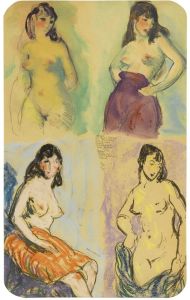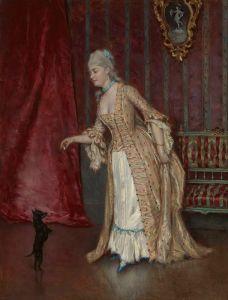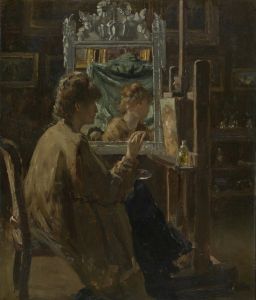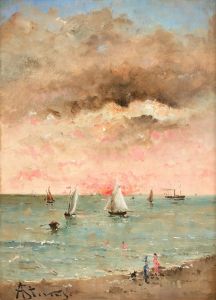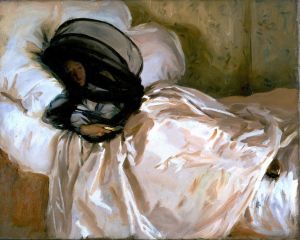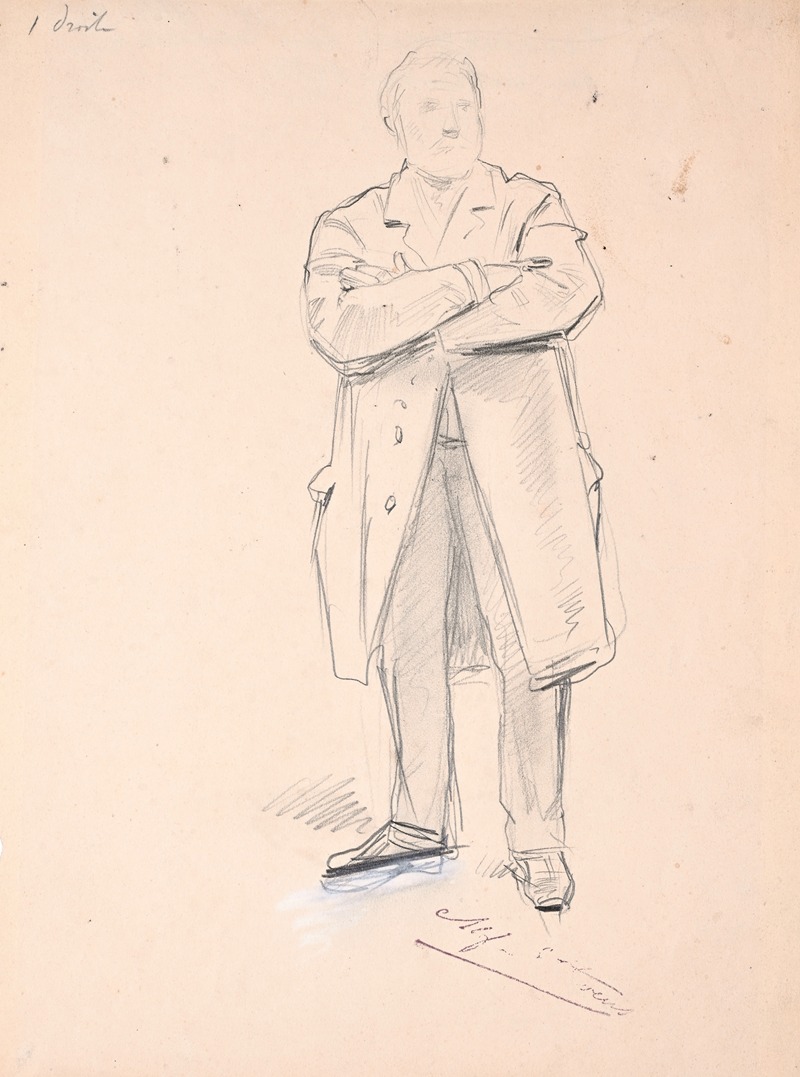
Study For The Panorama Du Siècle
A hand-painted replica of Alfred Stevens’s masterpiece Study For The Panorama Du Siècle, meticulously crafted by professional artists to capture the true essence of the original. Each piece is created with museum-quality canvas and rare mineral pigments, carefully painted by experienced artists with delicate brushstrokes and rich, layered colors to perfectly recreate the texture of the original artwork. Unlike machine-printed reproductions, this hand-painted version brings the painting to life, infused with the artist’s emotions and skill in every stroke. Whether for personal collection or home decoration, it instantly elevates the artistic atmosphere of any space.
Alfred Stevens, a notable Belgian painter of the 19th century, is renowned for his exquisite portrayals of women and his ability to capture the essence of contemporary life in his works. One of his intriguing pieces is "Study For The Panorama Du Siècle," which reflects his artistic prowess and the cultural milieu of his time.
Alfred Stevens was born on May 11, 1823, in Brussels, Belgium. He was part of a family with strong artistic inclinations; his brother Joseph Stevens was a well-known animal painter. Alfred Stevens studied at the Académie Royale des Beaux-Arts in Brussels and later moved to Paris, where he further honed his skills at the École des Beaux-Arts. In Paris, he became acquainted with several prominent artists, including Édouard Manet, and was influenced by the burgeoning Impressionist movement, although he never fully adopted its style.
"Study For The Panorama Du Siècle" is a preparatory work for a larger project that Stevens envisioned. The term "panorama" refers to a wide-angle representation of a physical space, often used in the 19th century to depict historical events or grand scenes. While the complete panorama project by Stevens may not have been realized or widely documented, this study provides insight into his creative process and thematic interests.
The study likely served as a conceptual exploration for a larger, more comprehensive work that aimed to capture the spirit of the century. Stevens was known for his ability to blend realism with a sense of elegance and sophistication, often focusing on the fashionable women of Parisian society. His works frequently depicted interiors and social scenes, reflecting the lifestyle and culture of the time.
In "Study For The Panorama Du Siècle," Stevens would have employed his characteristic attention to detail and composition. His studies often involved meticulous planning and sketching, capturing the nuances of light, texture, and form. Although specific details about this particular study are scarce, it can be inferred that Stevens applied his usual techniques of balancing color and form to create a harmonious and engaging piece.
Stevens' work is often celebrated for its portrayal of modernity and the changing roles of women in society. His paintings provide a window into the 19th-century bourgeois life, characterized by elegance and a keen observation of social dynamics. "Study For The Panorama Du Siècle" would have been no exception, potentially offering a narrative or thematic exploration of the era's significant events or cultural shifts.
Alfred Stevens continued to paint and exhibit his works throughout his life, gaining considerable acclaim in both Belgium and France. He was awarded the Legion of Honor in France and received numerous accolades for his contributions to the art world. His legacy is marked by his ability to capture the zeitgeist of his time with grace and precision.
In summary, while detailed information about "Study For The Panorama Du Siècle" is limited, it represents Alfred Stevens' broader artistic endeavors and his commitment to depicting the nuances of 19th-century life. His work remains a testament to his skill and his insightful portrayal of the world around him.






